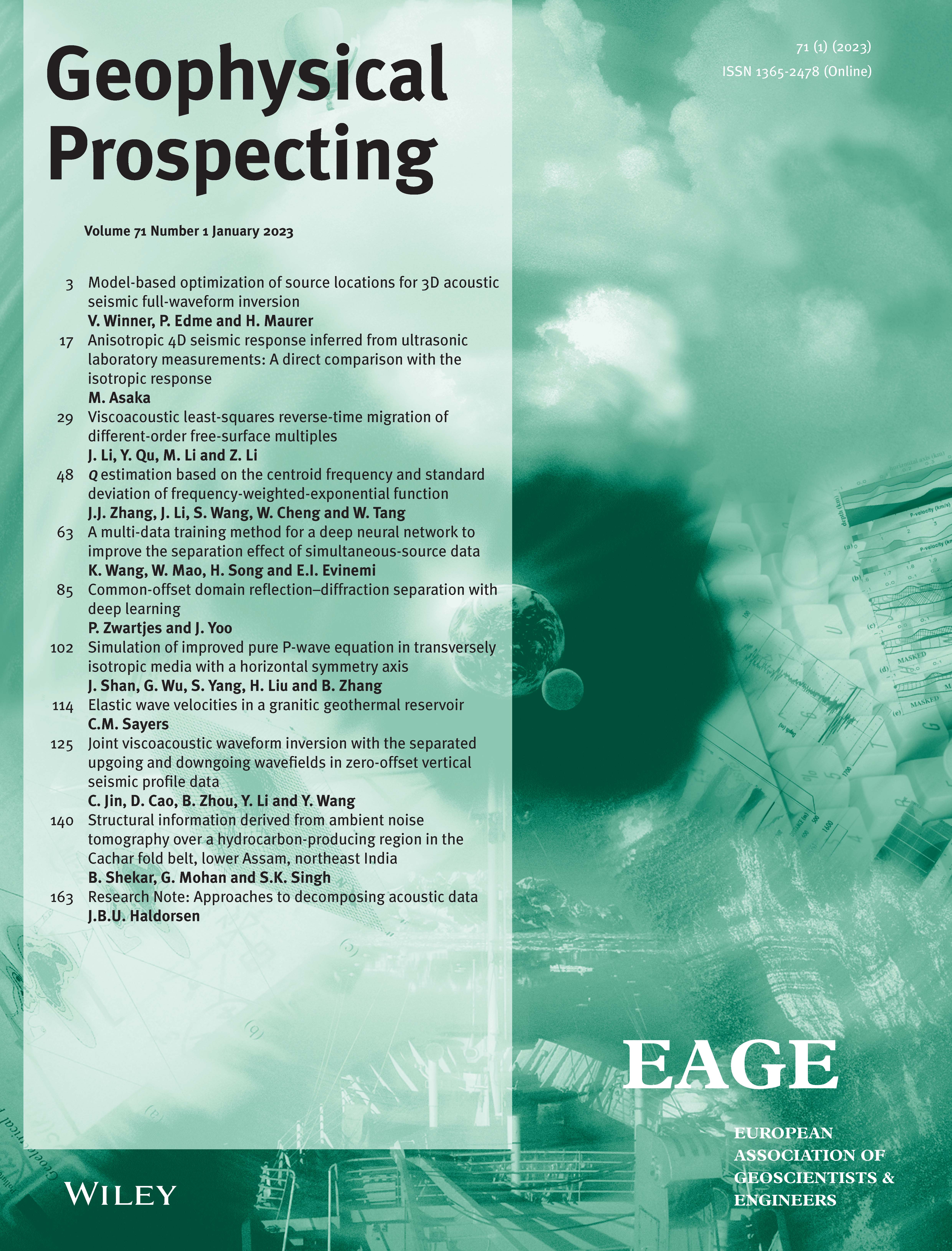-
oa Laboratory measurements of guided‐wave propagation within a fluid‐saturated fracture
- Source: Geophysical Prospecting, Volume 64, Issue 1, Dec 2015, p. 143 - 156
-
- 03 Mar 2014
- 07 Jul 2014
- 06 Apr 2015
Abstract
A fluid‐saturated flat channel between solids, such as a fracture, is known to support guided waves—sometimes called Krauklis waves. At low frequencies, Krauklis waves can have very low velocity and large attenuation and are very dispersive. Because they propagate primarily within the fluid channel formed by a fracture, Krauklis waves can potentially be used for geological fracture characterization in the field. Using an analogue fracture consisting of a pair of flat slender plates with a mediating fluid layer—a trilayer model—we conducted laboratory measurements of the velocity and attenuation of Krauklis waves. Unlike previous experiments using ultrasonic waves, these experiments used frequencies well below 1 kHz, resulting in extremely low velocity and large attenuation of the waves. The mechanical compliance of the fracture was varied by modifying the stiffness of the fluid seal of the physical fracture model, and proppant (fracture‐filling high‐permeability sand) was also introduced into the fracture to examine its impact on wave propagation. A theoretical frequency equation for the trilayer model was derived using the poroelastic linear‐slip interface model, and its solutions were compared to the experimental results.



